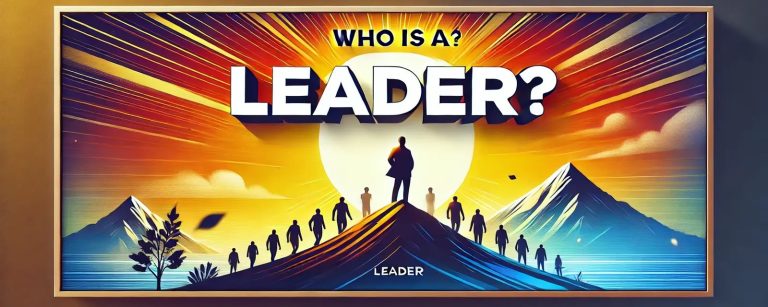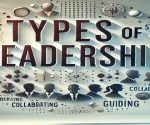An effective leader is a person who is able to lead, motivate, and guide people toward achieving a common objective. Leaders are not just people in a position of power, but those who are able to build trust, give clear messages, and inspire others to achieve their maximum potential. One leader understands where the team should go on the journey, so the team goes together to find the right way forward. In order to figure out who leadership is, it is, first of all, necessary to know what leadership is and to understand how it has a role in societies, organizations, communities, and so on. Political leaders or corporate leaders, teachers, parents, leadership, anyone. There is a also big difference between management and leadership.
Who is a Leader?
A leader is an individual providing direction, inspiration, and guidance that leads others to accomplish a common goal . A leader is looking out for a team that is made up of people with the proper tools and abilities. This also involves, selecting the right people, encouraging cooperation, and building the spirit of one group. Examples include that a sports coach, in order to build a successful team, matches the players, to their ability, with assignments to roles, and to working together.
In that they set an example and walk the talk, they represent the values they want to be seen and experienced by their team. Transformational leadership motivates others to think outside the box and make significant contributions within an organization or a society. They envision a future, articulate it, and encourage action in pursuit of that future. Leadership is not a domain of such titles; it can be given anywhere guidance and direction is required. No matter whether it is a manager working for a team, a professor guiding students, or a community organizer pushing for change, leadership, at its heart, is about power rather than power.
What are the Most Common Characteristics of a Leader?
A leader needs leaders to create special skills or attributes to communicate, make great decisions, and add value to others. Additionally, we elaborate and walk through this list that entails the general character types of a leader. And now on with more practical scenarios
Vision and Clarity
The view of where they want to go is defined by leaders. It is not just the big picture but also helping other members of their team understand this picture. The leader must understand direction and the team must be conscious of where it is going as well as steps required to be taken to achieve the destination. For instance, the vision for a startup CEO could be to become the market leader in sustainable products. This vision is then shared with the team through clearly stated objectives like the development of product lines for the eco-friendly sector and aiming to cut down the company’s carbon footprint by 50%. Vision provides a sense of purpose while clarity provides action.
Emotional Intelligence (EQ)
One of the greatest qualities of any effective leader is emotional intelligence. It refers to being in touch with one’s own emotions and also showing empathy towards others. A highly emotionally intelligent leader can perform well in stressful situations, resolve conflicts effectively, and develop rapport with members. For example, an emotionally intelligent leader would notice if one of his members is overloaded. Instead of lecturing that person for a subpar performance, the leader listens to find the root causes and provides some relief such as loading changes or resources in mental health.
Effective Communication Skills
Leadership has to do with communication. The best leaders express themselves clearly and listen carefully because they know that communicating is not only to instruct but also to open a channel. For example, a good leader does not just tell his team what to do. He explains why a task is important and asks for feedback, so everyone feels heard. This will build trust and ensure that people are aligned.
Decision-Making Skills
Decisions are not made easily, especially when fast thinking and sound judgment are required. A leader has to weigh the risks, analyze options, and then make a choice in situations where the stakes are high.
For example, a leader in a fast-paced environment must rapidly analyze data and make informed choices that will determine the direction and success of the team.
What is the Role of a Leader?
Being a leader goes beyond task delegation. Leaders will have to ensure that there is an excellent culture of innovation. They will do everything in their power to ensure that their team or organization is successful. We now go ahead to explain these roles in greater detail.
Setting the Vision
The definition of a clear vision and communicating the same to one’s team are some of the essential roles of a leader. This will be a roadmap guiding the team to achieve its goals. A team would easily get lost without a clear vision.
For example, an NGO leader can set a vision of eliminating hunger in a particular area within ten years. This guides his or her team in planning initiatives, raising funds, and mobilizing resources.
Inspiring Others
They make the team give their best efforts through creating a motivating and valuable people environment. Motivation comes in many ways, including acknowledging accomplishments, growth opportunities, or matching work to passion. An example is the motivation of the sales team leader through a celebration of the small wins and bonuses for the accomplishment of targets, among others, in bringing about friendly competition.
Driving innovation
A Transforming leader is innovative and always encourages their team to think out of the box. They always come up with alternative solutions that question traditional ways of doing things. They empower their team to think of innovative ways and novel solutions. For instance, a technology leader can challenge his or her team to test new technologies and reward them for innovations, regardless of the risk involved.
Conflict Resolution
Any group setting, without a doubt, will involve conflicts. A leader will step in to solve conflicts, promote equity, and sustain harmony among members.
A project manager, for example, might help a two-team member conflict to be resolved through a constructive conversation where each side can state his or her problems and agree on a common solution.
What Does a Leader Do?
A leader’s daily activities depend on the position and the environment in which they work. However, there are some responsibilities that cut across all leaders. Below, we discuss these responsibilities in detail.
Planning and Strategy
Leaders make strategies to achieve long-term goals. They anticipate challenges, allocate resources effectively, and ensure their plans are aligned with their vision. For instance, a business leader who aims to expand its markets may conduct competitor analysis, target demographics, and budget for a marketing campaign.
Decisive making
The leaders make decisions that influence the direction of their team or organization. The effective making of decisions is brought about by information analysis, consideration of stakeholders’ opinions, and the risks entailed.
For instance, a headmaster in a school may wish to introduce a new curriculum; the leader will consider the advantages and disadvantages of the program and engage teachers and parents to decide the issue.
Mentorship
The leader is also supposed to mentor and grow their followers. This means the leaders are going to coach or share ideas or experiences with others so they can develop themselves professionally. In this case, an experienced software engineer may be getting a junior developer ready for better coding practices. He will constructively criticize a junior developer who will be placed in challenging tasks.
Leadership vs Management
Leadership and management differ in what they are meant for; leadership is more about inspiring and guiding other people, whereas management places greater emphasis on maintaining processes and systems. A leader is a visionary who ensures change, but a manager makes sure day-to-day operations are functioning. Both functions are necessary for success, but whereas leadership emphasizes innovation and people, management emphasizes structure and operational effectiveness.
| Basis | Leader | Manager |
| Objective | Inspires change | Maintains stability |
| Focus | Vision and strategy | Tasks and operations |
| Style | People-oriented | Process-oriented |
| Decision-Making | Intuitive and innovative | Analytical and systematic |
Who is a Leader FAQs
Who is a management leader?
A management leader with leadership skills such as vision and communication but also possesses managerial capabilities such as planning and coordination helps to bring inspiration to the team while maintaining operational efficiencies.
A leader is the one who knows the way—what does it mean?
It means the leader understands the direction he has to be taking and is helping others find their way. A leader clarifies, builds confidence, and helps guide the team.
What is a transformational leader?
A transformational leader is one who inspires positive change, fosters innovation and motivates their team to achieve extraordinary results.
How can I become a better leader?
Be committed to lifelong learning, improving in terms of emotional intelligence, setting personal goals, and being open to receiving feedback. Consistency and empathy are the way to becoming an excellent leader.
What is the difference between leadership and management?
Leadership is about guiding and inspiring people, whereas management is all about maintaining systems and efficiency. Both roles are equally significant but for different reasons.


